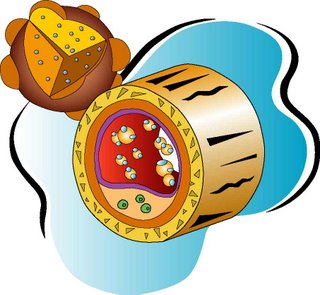
Sandy is a 56-year old woman--fit, slender, physically active, with no bad habits. A retired teacher, she has time to devote to her health. She bikes several days per week, mountain bikes, walks, and takes fitness classes. In short, she's the picture of perfect health.
Her heart scan score was not terribly impressive: 41. However, at her age, this modest score placed her in the 77th percentile. This suggested a heart attack risk of around 2-3% per year.
So we measured Sandy's lipoproteins. They were shockingly normal. In fact, Sandy is among the very rare person with absolutely no small LDL particles. All other patterns were just as favorable, including an HDL in the 80s.
This may seem like good news, but I find it disturbing. People are often initially upset by seeing multiple abnormal lipoprotein patterns. But lipoprotein abnormalities are the tools that we use to gain control over coronary plaque.
So what do we do when there are no abnormalities?
There are several issues to consider:
1) Your heart scan score reflects the sum total of your life up until that point. What if you were 20 lbs heavier 10 years earlier and your lipoproteins were abnormal during that period? Or you smoked until age 45 and quit? As helpful as they are, lipoproteins and related patterns are only a snapshot in time, unlike the heart scan score.
2) You have a vitamin D deficiency. This is unusual as a sole cause of coronary plaque. Much more commonly, it is a co-conspirator.
3) The heart scan is wrong--highly unlikely. Heart scans are actually quite easy, straightforward tests. (The only time this tends to happen is when scoring that appears in the circumflex coronary artery is actually in the nearby mitral valve. This really occurs only when there's very minimal calcium in the valve.)
4) There's a yet unidentified source of risk. Probably very rare but conceivable. For instance, there's an emerging sense that phopholipid patterns may prove to be coronary risks. One clinically available measure that we've not found very useful is phospholipase A2, known by the proprietary name "PLAC" test. (See http://www.plactest.com for more information from the manufacturer/distributor of the test.) But there's probably lots of others that may prove useful in future.
How often does it happen that someone fails to show any identifiable source for their coronary plaque? I can count the number of instances on two fingers--very unusual. (Thank goodness!)
Sandy's case is therefore quite unique. How should we approach her coronary plaque? In this unusual circumstance, lacking a cause, we tend to introduce therapies that may regress plaque independent of any measurable lipoprotein parameters. But that's a whole new conversation.